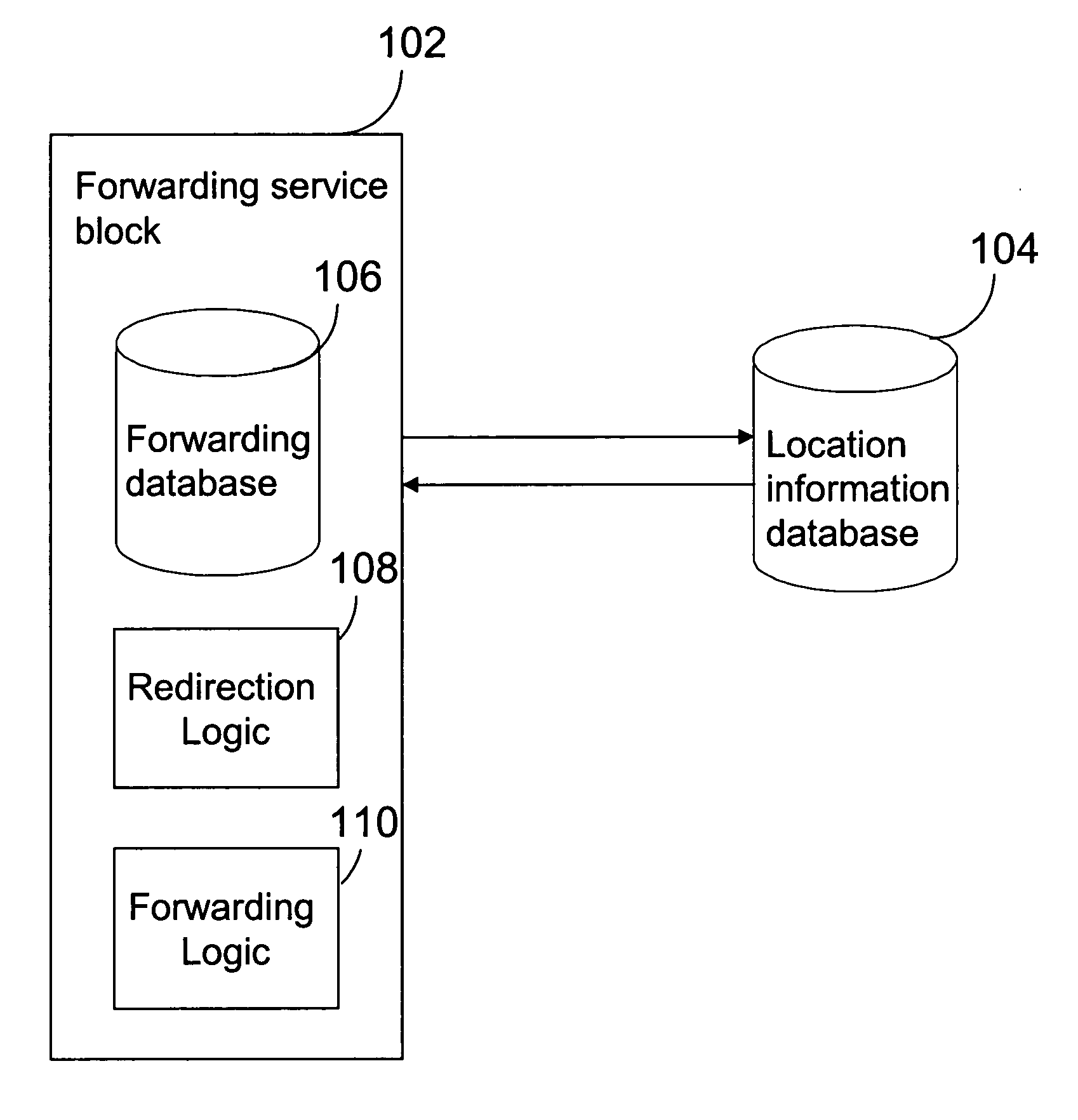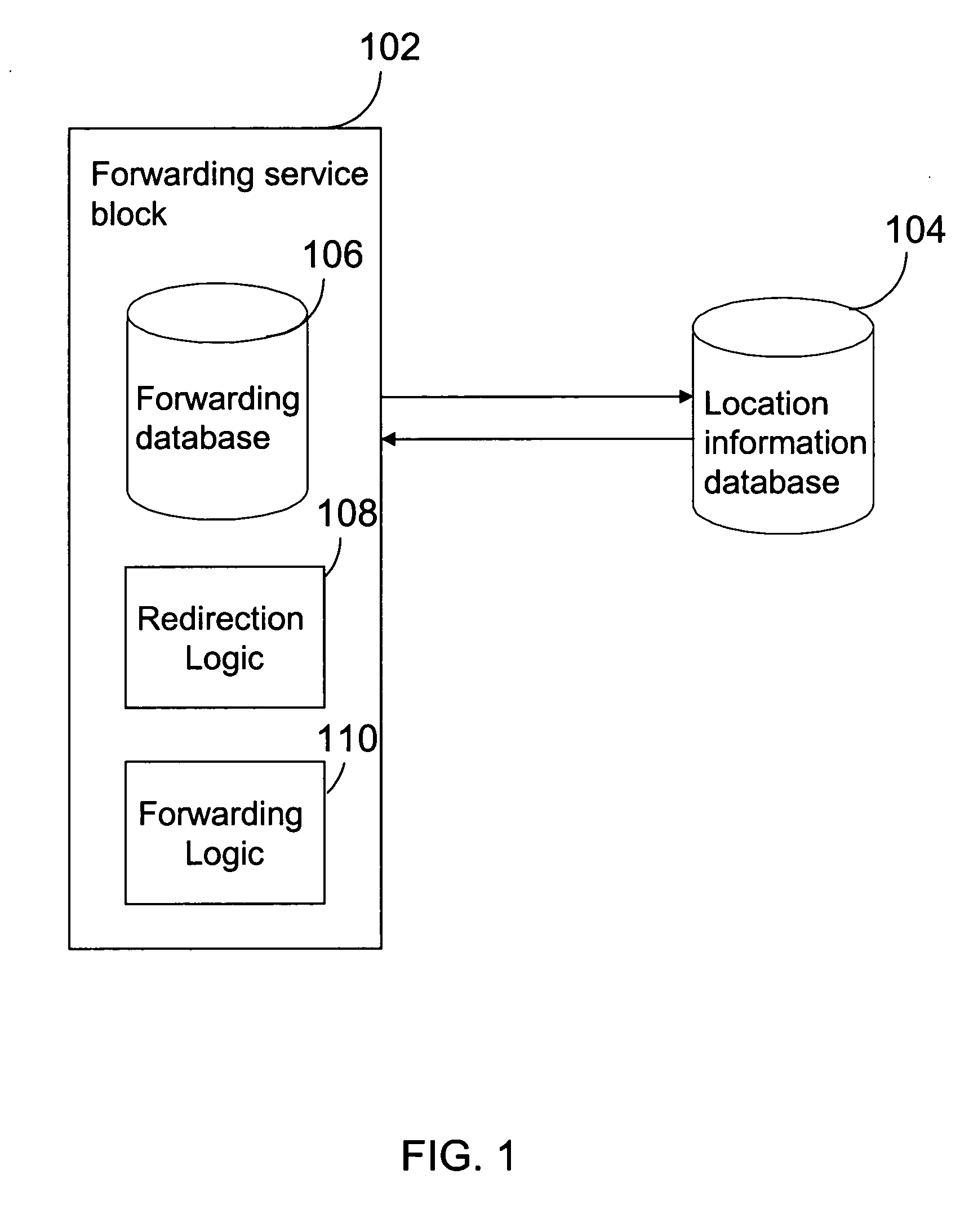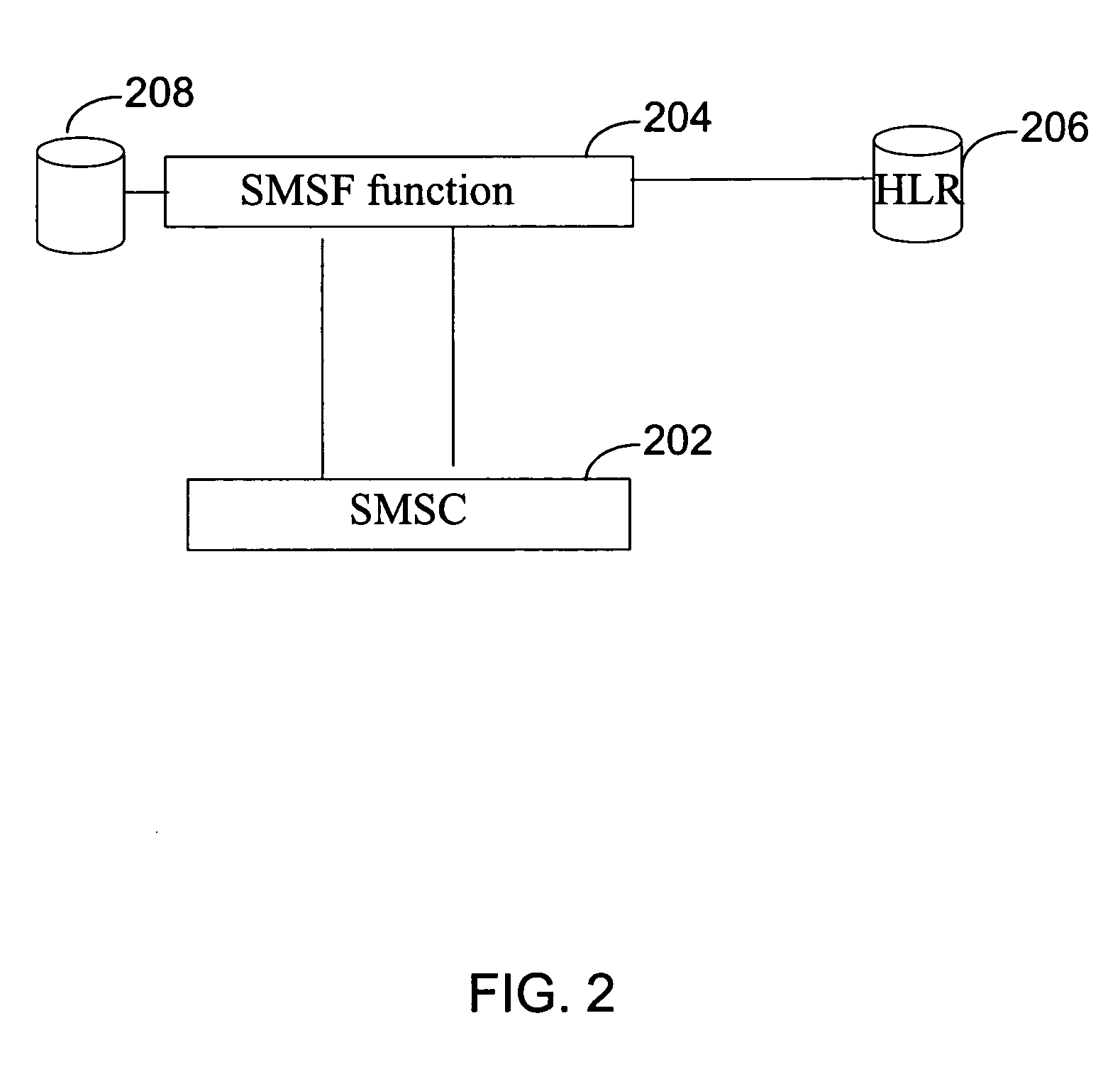Scalable message forwarding
a message forwarding and scalable technology, applied in the field of telecommunications network message forwarding, can solve the problems of not providing conditional or unconditional message forwarding, gsm specification still does not provide such support, and smsc-based solutions are not scalabl
- Summary
- Abstract
- Description
- Claims
- Application Information
AI Technical Summary
Problems solved by technology
Method used
Image
Examples
first embodiment
[0074] The subscriber rarely wishes to continue to forward messages to another number when a handset is on even if the subscriber has registered to call forwarding. Therefore, it is inconvenient to the subscriber when it receives a confirmation message each time the handset initiates a MO-activity or location update (e.g. powered on again). In accordance with the first embodiment, a configurable time out value is defined by the SMSF function. The time out value starts after the HLR of the forwarding number receives CancelLoc. If the time out value expires and the message forwarding is not canceled by the forwarding subscriber, the SMSF function automatically sets the location address of the SMSF function as of the location address of the forwarding subscriber at the HLR. There is no need to send the confirmation message to the subscriber.
[0075] In another embodiment of the present invention, the SMSF function changes the location at the HLR back to SMSF function after receiving Canc...
second embodiment
[0099] In accordance with the billing system, the billing system of an operator, for example, China Unicom, uses CDMA network. Here, a China Unicom CDMA subscriber A sends a message to a China Unicom CDMA subscriber B who has set forwarding to a China Unicom CDMA subscriber C. A Unicom SMSC of the A-party generates CDR and billing to the A-party for sending a message to the B-party. The CDR may contain sending party identification and receiving party identification.
[0100] The SMSF function will generate the CDR of the forwarding message. The CDR generated by the SMSF function may contain sending party identification, forwarding party identification and receiving party identification. The Unicom billing system uses the SMSF CDR to bill the B-party (since there is no destination message gateway involved).
third embodiment
[0101] In accordance with the billing system, the billing system of an operator, for example, China Unicom, uses CDMA and GSM networks. Here, a China Unicom GSM subscriber A sends a message to a China Unicom CDMA subscriber B who has set forwarding to a China Unicom CDMA subscriber C. A Unicom message gateway between GSM and CDMA networks generates the CDR and billing of the A-party. The CDR generated by the Unicom message gateway may contain sending party identification and receiving party identification. The CDR of the originating SMSC of the A-party will not be billed by recognizing the receiving number as CDMA number and the sending number as GSM number.
[0102] The Unicom message gateway will deliver the message “A to B”. The message is then sent to the SMSF function for forwarding the message to the C-party. The SMSF function generates the CDR of the forwarding delivery. The CDR generated by the SMSF function may contain sending party identification, forwarding party identificat...
PUM
 Login to View More
Login to View More Abstract
Description
Claims
Application Information
 Login to View More
Login to View More - R&D
- Intellectual Property
- Life Sciences
- Materials
- Tech Scout
- Unparalleled Data Quality
- Higher Quality Content
- 60% Fewer Hallucinations
Browse by: Latest US Patents, China's latest patents, Technical Efficacy Thesaurus, Application Domain, Technology Topic, Popular Technical Reports.
© 2025 PatSnap. All rights reserved.Legal|Privacy policy|Modern Slavery Act Transparency Statement|Sitemap|About US| Contact US: help@patsnap.com



